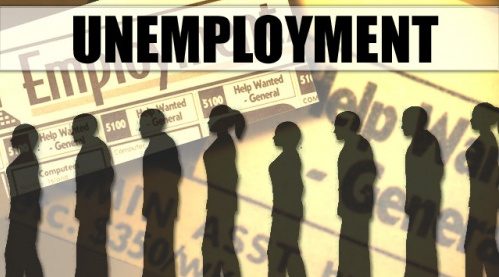PM Modi – who promised to create 1 crore jobs – is supremely indifferent to this crushing crisis.
In Jind district of Haryana, 8 posts of peon and one post of process server were advertised. Authorities were inundated with 14,836 applications for the former and 3662 for the latter. That’s about 2055 applicants per vacancy. Although the peon’s position required just class 10 eligibility, graduates, post graduates and even PhD students had applied. In a similar case in Rajasthan, 12,453 persons applied for 18 posts of peons in the Assembly Secretariat. These included 129 engineers, 23 lawyers, a chartered accountant and 393 postgraduates in arts. Typically, one of those selected was a BJP MLA’s son – causing an uproar of allegations of nepotism.
These two incidents provide a glimpse of the dire jobs situation in the country nearly 4 years after Prime Minister Modi swept to power in 2014, promising at least 1 crore jobs to people reeling under years of jobless growth.
About 24.6 million people were added to the labour force (over 15 years age) in the year. Not all of them would seek work. In India, those who are available for work were about 44% of the total labour force. This share is itself declining – it was 47% in January 2016 – and represents disappointment and hopelessness among youth because of non-availability of decent jobs.
So, about 11.5 million persons would have actually sought work in 2017. But, as per preliminary estimates of CMIE, India’s workforce increased from 405.3 million in 2016 to 407.4 million in 2017. That means, just 2 million people found new jobs in one year. That is a shockingly low rate of 0.5% increase in jobs. Small wonder that Jind and Jaipur saw thousands vying for sarkari posts!
CMIE’s analysis further shows that in urban areas jobs grew at 2% while in rural areas, there was a decline of 0.3%. This once again highlights the deep going crisis affecting the agriculture sector in India. Recent release of the GDP growth estimates by CSO, has underpinned the crisis by projecting that agriculture sector will show a total growth of a mere 2.1% in 2017-18. Since 64% of India’s vast workforce is employed in rural areas, this minusicle growth in jobs is going to play havoc with people’s lives.
By conservative estimates, and after counting even low paying, seasonal or irregular/casual jobs, about 20 million people were unemployed in 2017. Of these 40% or 8 million persons were in urban areas, as thousands continue to migrate to cities from rural areas in search of jobs. Clearly, the so called urban engines of growth or job creation have collapsed.
The prospects in 2018 are bleak.There is no plan of the government to either take positive steps to boost job creation or to boost the economy generally. It seems that the Modi-Shah duo is committed to a single point plan of winning elections only. Meanwhile, as the CMIE analysis shows, “new investment proposals dropped to Rs.8 trillion during the year compared to Rs.15 trillion in the preceding two years”. This is just 60% of all new investment proposals made in the previous year (2016-17). This level of investment is the lowest since 2004-05. This means that there is even less likelihood of more jobs being created in the organised sector because it is new investments that spurs new jobs. Similarly, completion of new capacities dropped to Rs.4.6 trillion in 2017 compared to Rs.6.8 trillion in 2016.
It is not just new investments for new projects that are dipping. The total value of outstanding under-implementation projects whose implementation is stalled has risen to about Rs.13.6 trillion compared to Rs.12.8 trillion in 2016-17. In other words, forget about new jobs – even jobs in existing projects are under severe threat.
India is in the throes of a grave economic crisis. Everybody, from casual laborers to industry captains know this. Yet our govt. is supremely unperturbed, merrily fiddling around with its hare-brained schemes and psuedo-nationalistic rhetoric.
Courtesy: Newsclick.in

